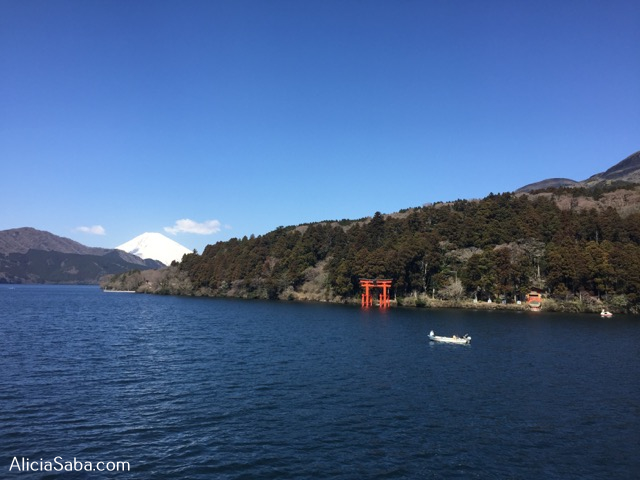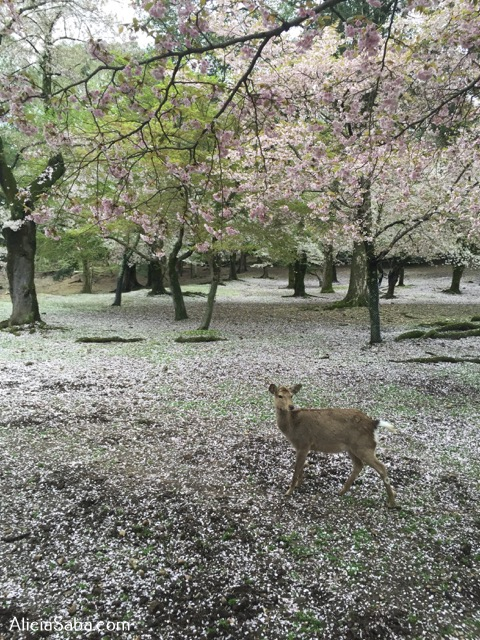There are many famous mountains in the world, but Mt. Fuji is among the most dramatic and beautiful. The images of snow cover on this legendary volcano are so iconic that millions around the world can recognize it, even if they haven’t been there.
Climbing Mt. Fuji is a Japanese tradition. Daily buses takes tourists from the center to Tokyo to the foot of the mountain. There are four routes up the mountain, each used daily during the summer climbing season by tourists from all over the world.
It takes about 6 hours to ascend the mountain’s 3776 meter (12,388 feet) summit and about 3 and a half hours to get down. There are protective huts all along the climbing routes and a temple at the top to take a moment to reflect on this powerful presence.
The mountain is open in late summer, but it’s important to know that thunderstorms roll in almost every evening. Climbers are advised to plan, months if not years, ahead.
While you are there, you can find two restaurants near the foot of the mountain that offer healthy, macrobiotic, and/or vegan foods. The Solar Café is located in Yamanashi (vegetarian) and Vegan Holiday (vegan) is located in Yamanaka-ko.
If you arrive in Japan in the spring, the trails up Mt. Fuji will be closed, but you can take the time to follow the cherry blossoms as the explode north up the island.
On Naha (Okinawa), the blossoms start as early as mid-January, but on the main islands, the blooming will track north between mid-March and late April. These flowers are a bright and beautiful part of Japanese culture.
One of the most beautiful places to see the cherry blossoms is the city of Nara. About 5 hours south of Mt. Fuji, Nara is an ancient city with ancient temples and traditions that was the capitol of Japan from 710 to 794. It has remained an important cultural and trade city ever since.
The city is home to eight temples and other shrines and ruins. Together with the Kasugayama Primeval Forest, they make up the “Historic Monuments of Nara,” an area that is a UNESCO World Heritage Site.
The Nara deer are one of the most important features in the temple. Tradition says that the god Takemikazuchi rode a white deer to Nara to protect the temples. Since then they have deer in the park around the temple. The deer will bow to you if you bow to them and sometimes even if you don’t.
While you are in Nara, you can stop off for meal at Hanasaka. This awesome vegan restaurant has great reviews on HappyCow and would be a wonderful addition to a visit to this time honored city.
A trip from Mt. Fuji to Nara will take you over and through the Akaishi Mountain Range, unless you drive along the coast (I might have to drive it twice!). This breathtaking mountain range is one of the world’s most beautiful locations. Nara itself is located in the Yoshino Mountain Range.
There are millions of amazing trips that you can take in the world, but this might be one of the most breathtaking. Whether you are taking in the cherry blossoms in spring or the mountain in summer, it is well worth the trip.
Special Thanks to Alicia Saba for these images!
www.aliciasaba.com
aliciasabatravel.com
Michele the Trainer
Engineering/Freelance Global Project Manager
Author, Public Speaker, Podcast Host at Michele the Trainer Show
Personal Trainer, Wellness Expert & Mentor/Lifecoach
877-409-1758
Projects MTTCS: www.MTTConsultingSolutions.com
Speaking: www.MicheleTheTrainerWellness.com
Health/Wellness: www.MicheleTheTrainer.com
Michele’s Blog: www.EngineeringWellness.com
Nature Blog: www.LiquidHike.com
Follow Me: Amazon Twitter Yelp LinkedIn Instagram Facebook YouTube Pinterest



